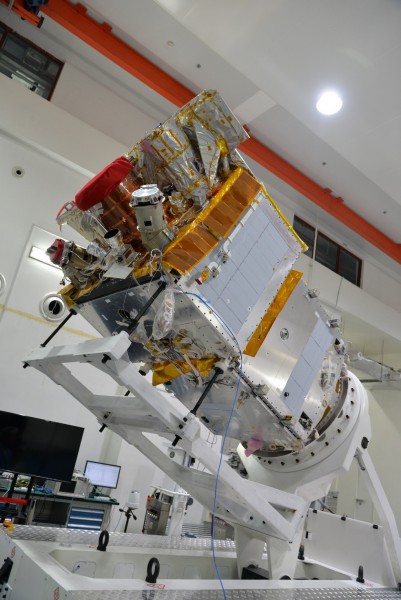The SVOM mission (Space-based multi-band astronomical Variable Objects Monitor) is a Franco-Chinese mission dedicated to the study of the most distant explosions of stars, the gamma-ray bursts. It has been launched on June 22, 2024 by the Chinese Long March 2C rocket from the Xichang launch base.
It is the result of a collaboration between the two national space agencies, CNSA (China National Space Administration) and CNES (Centre national d’études spatiales), with the main contributions of the Institute of Research into the Fundamental Laws of the Universe (Irfu) and the Research Institute of Astrophysics and Planetology (IRAP) for France and the National Astronomical Observatory (NAO) and the Beijing High Energy Institute (IHEP) for China.

The mission consists of 4 main instruments of which 2 are French (ECLAIRs and MXT) and 2 are Chinese (GRM and VT):
– The ECLAIRs telescope to detect and localise gamma bursts in the X-ray band and low-energy gamma rays (from 4 to 250 keV).
– The MXT telescope (Microchannel X-ray Telescope) for the observation of gamma burst in the soft X-ray range (0.2 to 10keV).
– The GRM (Gamma Ray Burst Monitor) to measure the spectrum of high-energy bursts (from 15 keV to 5000 keV).
– The VT telescope (Visible Telescope) operating in the visible range to detect and observe the visible emission produced immediately after a gamma burst.
The satellite weighs a total of 930 kg for a payload of 450 kg. It will be placed in a low earth orbit with an inclination of 30 degrees, an altitude of 625 km and an orbital period of 96 min.
Observations from space will be complemented by a large ground segment consisting of :
– The wide-field camera GWAC (Ground-based Wide Angle Camera) to study from the ground in the visible range, the prompt emission of part of the bursts detected.
– The robotic telescopes GFTs (Ground Follow-up Telescopes) to accurately measure the coordinates of the gamma-ray burst.




